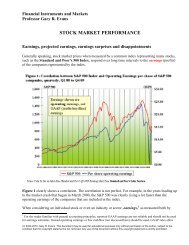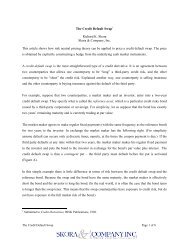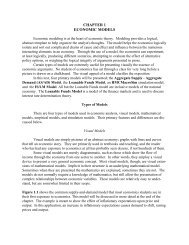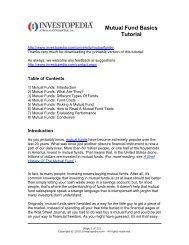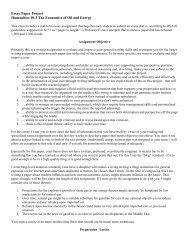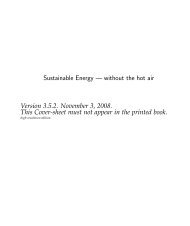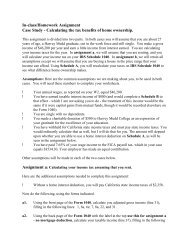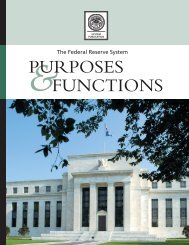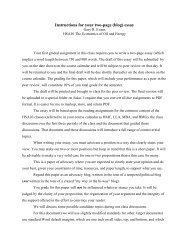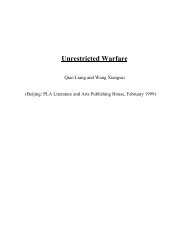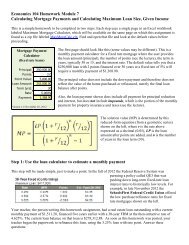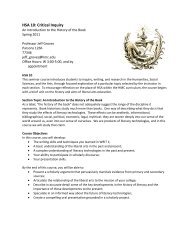Bond and Note Valuation and Related Interest Rate Formulas
Bond and Note Valuation and Related Interest Rate Formulas
Bond and Note Valuation and Related Interest Rate Formulas
Create successful ePaper yourself
Turn your PDF publications into a flip-book with our unique Google optimized e-Paper software.
<strong>Bond</strong> <strong>Valuation</strong> - Page 5million because so much of it is paid in the future <strong>and</strong> the lottery-winner gets no interest. Howmuch, then, is it worth? What, in other words, is the present value of this lottery win?At first glance this is clearly a more difficult problem than the problem represented in equation(6), which involved the present value of only one payment. In this problem there are 20payments.The solution here becomes easy to grasp as soon as we realize that when a payment streamincludes more than a single payment, the present value of those payments will be equal to thesummed present value of each individual payment. In the case of our lottery example, the presentvalue of a win is equal to the present value of each of the individual 20 annual payments,summed:7.500k500k500kValue 500k500k 0 1912181.08 1.08 1.08 1.08 1.08$5,301,800Expressing the same in summation notation:8.Value 19500kt0 1tr $5,301,800In a few words, the true value of winning $20 million in the California lottery, if we can assumethe prevailing interest rate to be 8%, is $5,301,800.VI. Elementary <strong>Bond</strong> <strong>Valuation</strong> - a Starting PointEvaluating a bond in many respects is not much different than giving a value to winning theCalifornia lottery. In the eyes of the finance markets a note or bond, whether newly issued orbeing resold on the secondary markets, is very little more than a future cash-payment stream.For example, a newly-issued 30-year bond paying interest once per year is a promise to pay (a)30 equal annual interest payments over 30 years, <strong>and</strong> (b) the bond’s par value (100) in exactly 30years. This is much like the California lottery payment, except the first payment is made at theend of the year instead of immediately, <strong>and</strong> in the case of the bond, the par value of the bond isredeemed at the end of the 30 years, resulting in one large final payment with a value equal topar.In is important to underst<strong>and</strong> that in the application below, we are using the formula to evaluatethe value of a bond on secondary market for a bond that was issued in the past at a time wheninterest rates were higher or lower.Suppose we are pricing the hypothetical bond discussed above - a 30-year bond paying interestonly once a year. Assume, as always, that the bond has a par value of 100 <strong>and</strong> a coupon rate of



